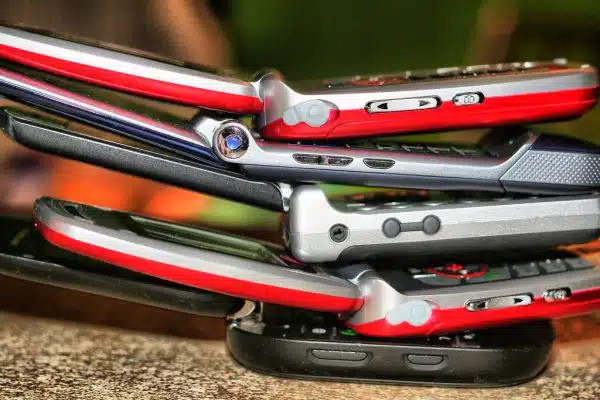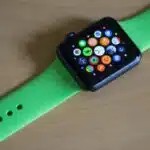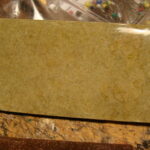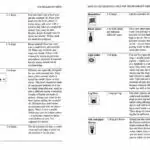As mobile devices continue to play an increasingly important role in our daily lives, it’s essential to ensure that they are free of germs and bacteria. Unbeknownst to many, our cell phones are breeding grounds for harmful pathogens that can cause illnesses and infections. Therefore, regular cleaning is crucial for maintaining good hygiene.
As a mobile device cleaning expert, I have seen firsthand the effects of poor phone hygiene on people’s health. In this article, I will share with you the best practices for cleaning your cell phone the right way. By following these tips, you’ll not only protect yourself from harmful germs but also prolong the lifespan of your device. So let’s dive in and learn how to keep our phones clean and germ-free!
The Importance Of Cleaning Your Cell Phone
As a mobile device cleaning expert, I cannot stress enough the importance of regularly cleaning your cell phone. With the constant use and handling of our phones, it’s easy to overlook the amount of bacteria and germs that accumulate on its surface. Not only can this lead to an unsanitary device, but it also poses health risks to the user.
Studies have shown that cell phones can harbor more bacteria than a toilet seat. This is due to the fact that we take our phones everywhere with us, including public restrooms and other germ-infested areas. Without proper cleaning, these harmful bacteria can transfer onto our hands and faces, leading to infections or illnesses.
It’s important for us to understand the risks of dirty cell phones and take action towards maintaining a clean device. By doing so, not only are we protecting ourselves from potential health hazards, but we’re also promoting cleanliness and hygiene in our daily lives. In the next section, we’ll delve deeper into understanding these risks and how they affect our overall well-being.
Understanding The Risks Of Dirty Cell Phones
It is essential to understand the risks associated with dirty cell phones. The surface of a phone can be a breeding ground for germs and bacteria, which can cause illness and infections. Studies have shown that cell phones carry more bacteria than toilet seats, making it crucial to clean your device regularly.
To properly clean your cell phone, you must use the right techniques. Firstly, always turn off your device before cleaning it to prevent any damage. Secondly, avoid using harsh chemicals or abrasive materials as they can scratch the screen or damage the protective coating. Instead, opt for a microfiber cloth and a cleaning solution specifically designed for electronics.
Regularly cleaning your phone is an important step in maintaining good hygiene. By understanding the risks of dirty cell phones and following proper cleaning techniques, you can reduce the spread of germs and keep yourself healthy. In the next section, we will identify common sources of germs on your phone and how to effectively sanitize them without causing any damage to your device.
Identifying Common Sources Of Germs On Your Phone
Like a bustling city, our cell phones are constantly on the move, transferring from one surface to another and coming into contact with various objects throughout the day. With such high traffic activity, it is no surprise that the prevalence of bacteria on our phones can be quite alarming. In fact, studies have shown that mobile devices can carry up to ten times more bacteria than a toilet seat!
To combat this issue, it is important to identify common sources of germs on your phone. Here are three examples:
- Human touch: Our hands are often in contact with germy surfaces like door handles, shaking hands with people and touching other unclean items before we handle our phones.
- Public spaces: Places like public transportation stations, restaurants and restrooms are breeding grounds for bacteria that can easily transfer onto your phone.
- Personal environments: Your own home or work environment may also be a source of germs as you interact with shared spaces or objects.
Knowing where these germs come from will help you take necessary steps towards sanitizing your device using proper sanitizing techniques. Remember that there is no one-size-fits-all cleaning method for all types of phones, so it’s essential to use the right technique for yours.
As a mobile device cleaning expert, I recommend consulting your manufacturer’s instructions or seeking advice from professionals to ensure you’re using the correct sanitizing technique for your device. In addition, always wash your hands before handling your phone and avoid sharing it with others who may not have practiced proper hygiene habits.
With these tips in mind, you’ll be better equipped to keep yourself and those around you safe from harmful bacteria lurking on your phone. Next step? Choosing the right cleaning supplies!
Choosing The Right Cleaning Supplies
Now that you have identified the common sources of germs on your phone, it is time to choose the right cleaning supplies. Choosing appropriate disinfectants is crucial for ensuring that your phone is free from harmful bacteria and viruses. Not all disinfectants are suitable for use on electronic devices, so it is essential to read the label carefully before purchasing.
Microfiber cloths are highly recommended for cleaning your phone. These cloths are designed to attract and trap dirt, dust, and other particles without leaving any scratches or streaks on the surface. They are also gentle enough to use on sensitive electronics, making them perfect for cleaning your cell phone.
When it comes to mobile device cleaning, it is important to avoid harsh chemicals and abrasive materials. Avoid using bleach, ammonia-based cleaners or any other harsh chemicals as they can damage the surface of your phone. Additionally, abrasive materials such as paper towels, tissues or even your shirt can scratch your screen. Always use a microfiber cloth or a soft-bristled brush to remove dirt and debris from hard-to-reach areas.
Transitioning into the subsequent section about avoiding harsh chemicals and abrasive materials: “By using appropriate disinfectants and microfiber cloths in cleaning your cell phone, you can ensure its safety from harmful pathogens while keeping its pristine condition intact. However, there are still some things you need to consider when choosing the right products for cleaning. One of which is avoiding harsh chemicals and abrasive materials.”
Avoiding Harsh Chemicals And Abrasive Materials
Harsh chemicals and abrasive materials can damage your phone’s screen and housing. It is important to avoid using these types of cleaning solutions when maintaining your phone’s cleanliness. Not only can they cause physical damage, but they can also affect the functionality of your device.
Alternative cleaning methods are available that use natural cleaning solutions. One such solution is a mixture of water and vinegar. This solution is effective in removing dirt and grime from your phone without causing any harm to its exterior. Simply mix equal parts water and vinegar in a spray bottle, lightly mist the solution onto a microfiber cloth, and gently wipe your phone clean.
Using natural cleaning solutions not only protects your phone from potential damage, but it also benefits the environment by reducing chemical waste. Incorporating these alternative methods into your mobile device cleaning routine can be an easy way to serve both your device and the planet.
When considering how to clean your cell phone properly, removing the case for better cleaning should also be taken into account. Often overlooked, the phone case can harbor bacteria and dirt that can transfer back onto your device after cleaning. Removing the case allows for a more thorough clean of both the case and the phone itself.
Removing Your Phone Case For Better Cleaning
As we have discussed, harsh chemicals and abrasive materials should be avoided when cleaning your cell phone. Now, let’s move on to the next step in properly cleaning your device. Removing your phone case is an important part of the process as it allows for better access to the nooks and crannies of your phone that are often missed with the case on.
Before removing your phone case, make sure to turn off your device. This will prevent any accidental button presses or damage while you are cleaning. Once your phone is turned off, gently remove the case from your device. Take extra care if you have a tight-fitting or waterproof case as they may require more force to remove.
After removing your phone case, use a microfiber cloth and mild detergent solution to clean all surfaces of your device thoroughly. When finished, it is important to allow proper drying time before putting the case back on. Drying techniques such as air drying or using a dry microfiber cloth can help ensure that all moisture has been removed from both your phone and its case.
Moving forward, disinfecting your phone screen is crucial in keeping harmful germs at bay. Let’s take a closer look at how to properly disinfect and sanitize our devices in the next section.
Disinfecting Your Phone Screen
To ensure that your phone is free from harmful bacteria and viruses, it is essential to disinfect the screen regularly. Disinfectant solutions can be used to achieve this, and they can be purchased from stores or online retailers. However, it is important to note that not all disinfectants are suitable for use on phones. Therefore, it is recommended to use a disinfectant solution that is specifically designed for electronic devices.
DIY cleaning methods are also an option for those who prefer natural products. A mixture of 70% rubbing alcohol and 30% water can be used to clean the screen effectively. This solution should be applied to a microfiber cloth and gently wiped across the surface of the phone screen. It is recommended to avoid using abrasive materials such as paper towels or tissues as they can scratch the screen.
To ensure that your phone screen remains disinfected, here are four tips to keep in mind:
- Clean your phone screen at least once a day.
- Avoid using harsh chemicals that can damage the protective coating on your phone’s screen.
- Always use a microfiber cloth when cleaning your phone’s screen.
- Be sure to turn off your phone before cleaning it.
Now that you know how to disinfect your phone’s screen properly, let’s move on to cleaning your phone’s ports and buttons without damaging them.
Cleaning Your Phone’s Ports And Buttons
To ensure your phone is truly clean, it’s important to pay attention to the ports and buttons. These areas are often neglected and can collect debris over time. To clean your phone’s ports, first turn off the device to avoid any potential damage. Then, use a small brush or toothpick to gently remove any visible debris. Be careful not to push the debris further into the port.
It’s also important to protect your phone components while cleaning them. Avoid using any harsh chemicals or abrasive materials that could damage the device. Instead, use a microfiber cloth dampened with water or a gentle cleaning solution specifically designed for electronics. Be sure to wring out the cloth thoroughly before wiping down any sensitive areas.
By cleaning your phone’s ports and buttons regularly, you can help prevent long-term damage and extend the life of your device. Once you’ve finished cleaning these areas, it’s time to move on to wiping down your phone’s body for an all-around clean.
Wiping Down Your Phone’s Body
As you wipe down your phone’s body, it is essential to use a microfiber cloth. This type of cloth is specially designed to pick up dirt and grime, rather than just pushing it around on the surface. Microfiber cloths are ideal for cleaning electronic devices as they do not leave any scratches or streaks. They are also gentle enough to use on delicate surfaces without causing damage.
When it comes to cleaning frequency, it is recommended that you wipe down your phone at least once a day. However, if you use your phone excessively throughout the day, wiping it down more frequently is advisable. This will help prevent the buildup of bacteria and germs on the surface of your device. Additionally, if you have been in an environment where there is a high risk of contamination such as a hospital or public transport, then cleaning your phone more often is crucial.
By using a microfiber cloth and wiping down your phone’s body regularly, you can keep your device clean and hygienic. Remember that the cleanliness of your phone plays an important role in preventing the spread of viruses and diseases. In the following section about drying your phone properly, we will discuss how to ensure that no water or moisture remains on the surface after cleaning.
Drying Your Phone Properly
After cleaning your phone, the next step is to ensure that it is dried properly. This will prevent any moisture from accumulating and causing damage to your device. Two common methods of drying your phone are towel drying and air drying.
Towel vs air drying: Towel drying involves using a soft, clean cloth to gently wipe down your device. This is a quick and easy method that can effectively remove any excess moisture on the surface of your phone. On the other hand, air drying involves leaving your phone in a well-ventilated area for several hours or overnight. This method allows for more thorough drying, but it may take longer.
Using a hair dryer vs natural drying: While using a hair dryer may seem like an effective way to dry your phone quickly, it’s important to avoid this method. The high heat from the hair dryer can damage your device and cause it to overheat. Instead, opt for natural drying methods such as towel or air drying.
To ensure that you’re properly drying your phone, keep these tips in mind:
- Always use a clean and soft cloth when towel drying
- Don’t use excessive force when wiping down your device
- Avoid using heat sources such as a hair dryer or direct sunlight
- Make sure that the area where you’re air-drying your phone is well-ventilated
- Allow sufficient time for your phone to dry completely before using it again
By following these tips, you can effectively dry your phone without causing any damage or harboring additional germs and bacteria.
Transition: Now that you know how to properly dry your phone after cleaning it, let’s explore some preventative measures you can take to minimize future germs and bacteria buildup on your device.
Preventing Future Germs And Bacteria Buildup
Preventing cross contamination is essential in maintaining your phone’s cleanliness. Avoid sharing your mobile device with others to prevent the transfer of germs and bacteria. If you need to share your device, use a disinfectant wipe before passing it on.
Using natural cleaning methods can also help prevent future buildup of germs and bacteria on your phone. A mixture of equal parts water and vinegar can be used to wipe down your device. Another natural option is using a solution of rubbing alcohol and water, which can effectively kill germs without damaging the phone’s screen.
In addition to regularly cleaning your phone, developing good phone hygiene habits can further minimize the risk of contamination. These habits include washing your hands before using your device, avoiding touching your face while using it, and not placing it on dirty surfaces such as countertops or tables. By implementing these practices, you can keep your cell phone clean and reduce the risk of spreading harmful bacteria or viruses.
As we move towards better understanding the importance of keeping our mobile devices clean, developing good habits around phone hygiene is paramount. Not only will it help protect ourselves from potential contamination but also protects those around us as well. Let’s continue to prioritize our health by taking responsibility for keeping our phones clean and safe for use at all times.
Developing Good Phone Hygiene Habits
To prevent future germs and bacteria buildup on your phone, it is important to develop consistent habits and maintain cleanliness on the go. This involves making small changes to our daily routines that can have a big impact on our overall health. Developing good phone hygiene habits is not only beneficial for our personal health but also for those around us.
Firstly, always wash your hands before touching your phone. This simple step can help reduce the spread of germs and bacteria from your hands onto your device. Additionally, avoid placing your phone on unsanitary surfaces such as public restroom counters or floors. Instead, use a clean surface or place a cloth between the phone and the surface to protect it.
Secondly, make sure to regularly wipe down your phone with an appropriate cleaning solution or disinfectant wipes. This will help keep your phone free from germs and bacteria buildup that can accumulate over time. Avoid using harsh chemicals or abrasive materials that can damage your device’s surface.
Lastly, consider investing in a protective case that is easy to clean and reduces the amount of contact between your hands and the phone’s surface. This can also help prevent scratches and other damage to the device while maintaining cleanliness on the go.
- Always wash hands before touching phone
- Avoid placing phone on unsanitary surfaces
- Regularly wipe down with appropriate cleaning solution
Developing good phone hygiene habits may seem like a small task but it can have a big impact on our overall health. Maintaining cleanliness on the go should be a priority for everyone who uses their mobile devices frequently. By following these tips, you can ensure that you are doing everything possible to keep yourself and those around you healthy.
Moving forward, it is important to be aware of common mistakes people make when cleaning their phones to avoid damaging their devices or reducing their effectiveness in killing germs and bacteria.
Common Mistakes To Avoid When Cleaning Your Phone
- When cleaning a phone, it is important to avoid using abrasive materials such as steel wool or scouring pads as they can scratch the surface of the device.
- Excessive use of liquid should be avoided as it can cause damage to the internal components of the phone.
- The type of cloth used for cleaning should be soft and lint-free, such as microfiber cloths, to prevent leaving marks on the phone’s surface.
- Chemical cleaners should be avoided as they can cause staining and damage to the phone’s case or screen.
- Harsh scrubbing should be avoided as it can cause damage to the device’s delicate components.
- It is important to use only gentle movements when cleaning a phone to ensure that no damage is caused to the device.
Using Abrasive Materials
Imagine your cell phone as a delicate piece of glassware, susceptible to scratches and cracks. When it comes to cleaning your phone, using abrasive materials like paper towels or rough cloths can create micro-abrasions on the surface of the screen. These tiny scratches may seem insignificant at first, but over time they can accumulate and lead to deeper cracks, making your phone more vulnerable to damage. As a mobile device cleaning expert, I highly recommend avoiding abrasive materials when cleaning your phone.
Instead of using harsh materials that can damage your phone’s screen, opt for safe materials like microfiber cloths or even a soft-bristled toothbrush. Microfiber cloths are gentle on surfaces and can effectively remove dirt and oil without leaving any marks behind. A soft-bristled toothbrush can also be used in conjunction with a small amount of water or rubbing alcohol to clean hard-to-reach areas like ports and buttons. By using these alternatives to abrasives, you’ll prolong the life of your phone and keep it looking brand new.
In conclusion, using abrasive materials is one of the most common mistakes people make when cleaning their phones. Not only do they create micro-abrasions on the surface of the screen, but they also increase the risk of cracks and other forms of damage. As a mobile device cleaning expert, I urge you to use safe materials like microfiber cloths or a soft-bristled toothbrush instead. With these alternatives in mind, you’ll be able to keep your phone clean without sacrificing its integrity.
Using Too Much Liquid
When it comes to cleaning your phone, using too much liquid can be just as damaging as using abrasive materials. While it’s important to keep your phone clean and free of dirt and grime, over-saturating it with liquid can lead to potential damage. As a mobile device cleaning expert, I advise against excessive use of liquid when cleaning your phone.
One of the biggest risks associated with using too much liquid is the potential for water damage. Many people assume that their phones are waterproof or water-resistant, but this isn’t always the case. If water seeps into the internal components of your phone, it can cause irreversible damage that may not be covered by your warranty. As such, it’s essential to use only a small amount of liquid when cleaning your phone.
In addition to the risk of water damage, too much liquid can also cause problems with the adhesives that hold your phone together. Over time, excessive exposure to liquids can weaken these adhesives and make your phone more susceptible to cracks and other forms of physical damage. To avoid these issues, I recommend using a damp microfiber cloth or specialized cleaning solution in moderation when cleaning your phone. With these precautions in place, you’ll be able to keep your device looking great without putting it at risk of potential damage.
Using The Wrong Cloth
Another common mistake people make when cleaning their phones is using the wrong type of cloth. While it may be tempting to use whatever is on hand, such as a paper towel or tissue, these materials can actually cause more harm than good. Paper towels and tissues are often rough and abrasive, which can scratch the surface of your phone and leave behind tiny fibers that can get stuck in the crevices. As a mobile device cleaning expert, I always advise against using paper towels or tissues for cleaning cell phones.
Instead, I recommend using microfiber cloths to clean your phone. Microfiber cloths are soft, gentle, and highly effective at removing dirt and grime without causing any damage to your phone’s surface. They are also reusable and easy to wash, making them an eco-friendly option for keeping your phone clean. To avoid cross-contamination, it’s important to store your cleaning materials separately from other household items and never share them with others.
When using microfiber cloths for cleaning your phone, there are a few tips you should keep in mind. First, avoid using too much pressure when wiping down your phone to prevent accidental scratches or cracks. Second, make sure to use a clean cloth every time you clean your phone to avoid spreading bacteria or dirt from previous uses. Finally, don’t forget to regularly wash your microfiber cloths with mild detergent and warm water to keep them free of germs and debris.
By avoiding common mistakes like using paper towels and storing cleaning materials properly, you can keep your phone looking great without putting it at risk of damage or contamination. As a mobile device cleaning expert, I always encourage people to take care when cleaning their phones so they can enjoy a long-lasting device that looks as good as new.
When To Seek Professional Cleaning Services
It is important to note that sometimes cleaning your cell phone yourself may not be enough. In some cases, seeking professional cleaning services may be necessary. There are several benefits to having your cell phone professionally cleaned, including a deeper and more thorough cleaning, as well as access to specialized tools and equipment that can effectively remove bacteria and other contaminants.
While professional cleaning services may come at a cost, the long-term benefits of having a clean and properly functioning device can outweigh the expense. Not only does a clean phone provide peace of mind in terms of personal hygiene, but it can also prolong the lifespan of your device by preventing damage from buildup or corrosion.
Overall, seeking professional cleaning services for your cell phone can be a cost-effective investment in both personal health and device longevity. It is important to weigh the benefits against any potential costs and make an informed decision based on individual circumstances.
Moving forward, if you are still unsure about whether or not to seek professional cleaning services for your cell phone, there are several frequently asked questions that may help clarify any concerns you have.
Frequently Asked Questions About Cleaning Your Cell Phone
They say cleanliness is next to godliness, and with the global pandemic still ongoing, it has become more important than ever to keep your cell phone clean. As a mobile device cleaning expert, I have received numerous queries regarding the dos and don’ts of cleaning your phone. In this section, we will address some frequently asked questions about cleaning your cell phone.
One of the most common questions we receive is whether DIY cleaning methods are effective in keeping our phones clean. The answer is yes and no. While DIY methods like using a microfiber cloth or rubbing alcohol can be effective in removing dirt and grime from your phone’s surface, they may not be enough to kill germs and bacteria. Moreover, using harsh chemicals like bleach or ammonia can damage your phone’s screen and body.
Another question that we often get is whether professional cleaning services are worth the expense. Professional cleaning services use specialized equipment and solutions that can thoroughly disinfect your phone while preventing any damage. However, these services can be costly and may not be necessary if you regularly clean your phone using safe DIY methods.
In conclusion, keeping your cell phone clean is an essential part of personal hygiene in today’s world. While there are several DIY methods to keep your phone clean, it is crucial to ensure that you do not use abrasive materials or harsh chemicals that could damage your device. If you want a more thorough cleaning without risking any damage to your phone, professional cleaning services may be worth considering.
Conclusion
Maintaining clean and hygienic cell phones is crucial for our health and wellbeing. With the prevalence of germs and bacteria, it is essential to understand the risks involved in using a dirty phone. Identifying common sources of germs on your device and choosing the right cleaning supplies are the preliminary steps towards a cleaner phone. Avoiding harsh chemicals and abrasive materials is equally important to prevent any damage to your device.
Developing good phone hygiene habits can go a long way in preventing the spread of germs. Simple gestures like washing hands or using headphones can reduce contact with harmful bacteria. It’s important to avoid common mistakes while cleaning your phone, such as using excess water or applying pressure while wiping your screen.
As an expert in mobile device cleaning, I urge everyone to take proper care of their phones by following these guidelines. Remember, cleanliness is next to godliness, so let’s make sure we keep our devices clean and free from harmful bacteria! As Benjamin Franklin once said, “An ounce of prevention is worth a pound of cure.” Taking preventive measures now will save us from bigger troubles in the future. So let’s prioritize our health by keeping our cell phones clean!
Image Credits
- “Cell Phones” by Scallop Holden (featured)





























